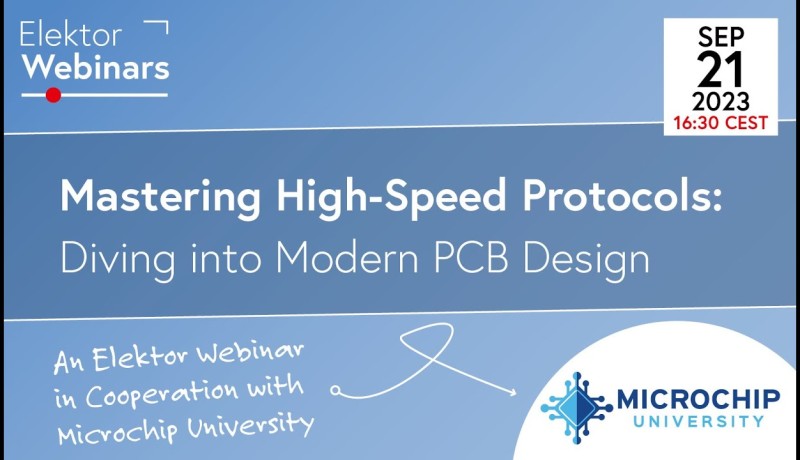Mastering High-Speed PCB Design with Carl Johnson from Microchip (Webinar)
November 22, 2023
on
on

In the world of electronics, the mastery of high-speed PCB design can be a crucial skill for some applications. If you're looking to deepen your understanding of this complex area, this webinar from Carl Johnson of Microchip is a great resource!
This technical presentation covers critical aspects such as transmission line theory, including the differences between microstrip and stripline in PCB design, and the challenges posed by crosstalk.
Johnson, with his extensive experience at Microchip, addresses crucial concepts like PCB construction, offering insights into the arrangement of layers in a PCB and how it impacts signal integrity. The discussion on eye diagrams provides a practical tool for analyzing signal quality, very much needed for high-speed data transmission.
The webinar also covers the role of bypass capacitors, which play a decisive role in the performance of a high-speed circuit. Johnson's approach combines theoretical knowledge with real-world examples, including discussion about types of dielectric materials, making it a very valuable resource for both novice and seasoned designers..
Also, don't miss the engaging Q&A session that followed the webinar. Viewers asked some very interesting questions, and Carl Johnson's insightful responses covered topics like ground planes, the challenges of using double traces for signal and return routing, strategies to avoid resonance frequencies and standing waves, and the influence of thermal vias on digital high-speed signals.
For anyone in the field of high-speed PCB design design, this webinar is an informative session, promising to enhance your skills and understanding of this challenging domain. Watch the video below:
This technical presentation covers critical aspects such as transmission line theory, including the differences between microstrip and stripline in PCB design, and the challenges posed by crosstalk.
Johnson, with his extensive experience at Microchip, addresses crucial concepts like PCB construction, offering insights into the arrangement of layers in a PCB and how it impacts signal integrity. The discussion on eye diagrams provides a practical tool for analyzing signal quality, very much needed for high-speed data transmission.
The webinar also covers the role of bypass capacitors, which play a decisive role in the performance of a high-speed circuit. Johnson's approach combines theoretical knowledge with real-world examples, including discussion about types of dielectric materials, making it a very valuable resource for both novice and seasoned designers..
Also, don't miss the engaging Q&A session that followed the webinar. Viewers asked some very interesting questions, and Carl Johnson's insightful responses covered topics like ground planes, the challenges of using double traces for signal and return routing, strategies to avoid resonance frequencies and standing waves, and the influence of thermal vias on digital high-speed signals.
For anyone in the field of high-speed PCB design design, this webinar is an informative session, promising to enhance your skills and understanding of this challenging domain. Watch the video below:
Explore Further!
View other great educational videos and tap into the knowledge of experts by checking out our additional content on our Elektor YouTube channel and our Elektor Industry Youtube channel.Stay Informed
Subscribe to our Elektor newsletter to receive a consistent flow of expert tech knowledge and interesting perspectives.Read full article
Hide full article


Discussion (0 comments)